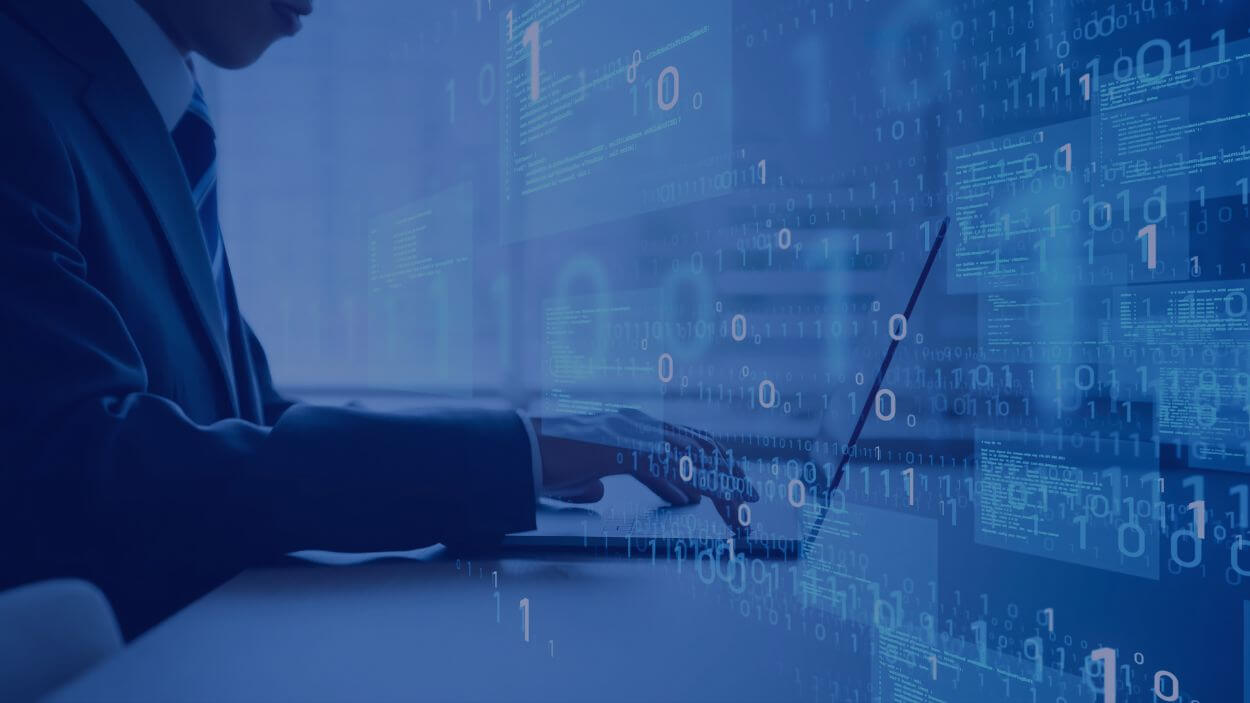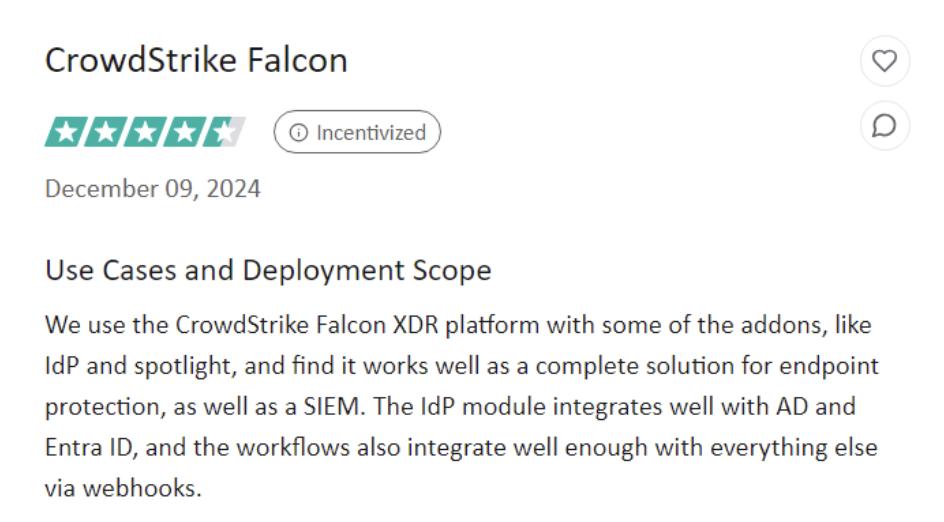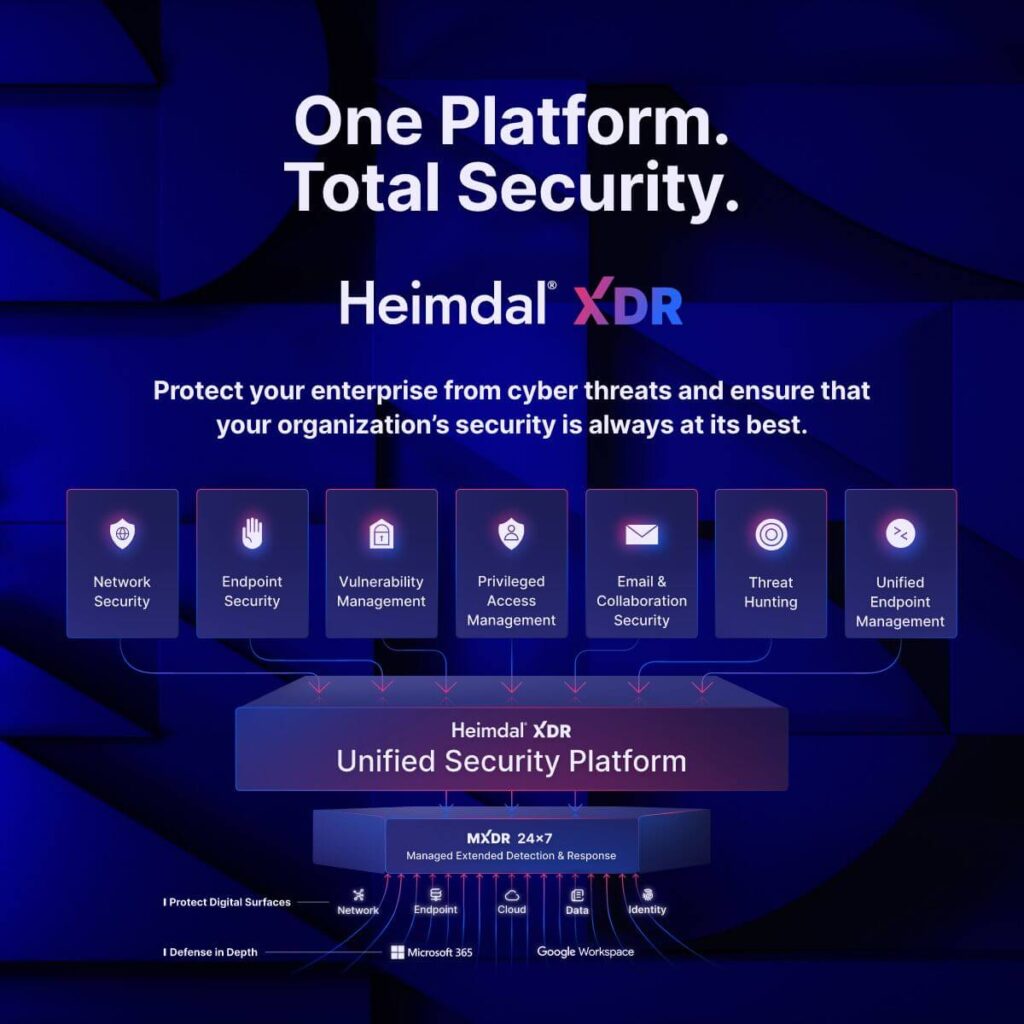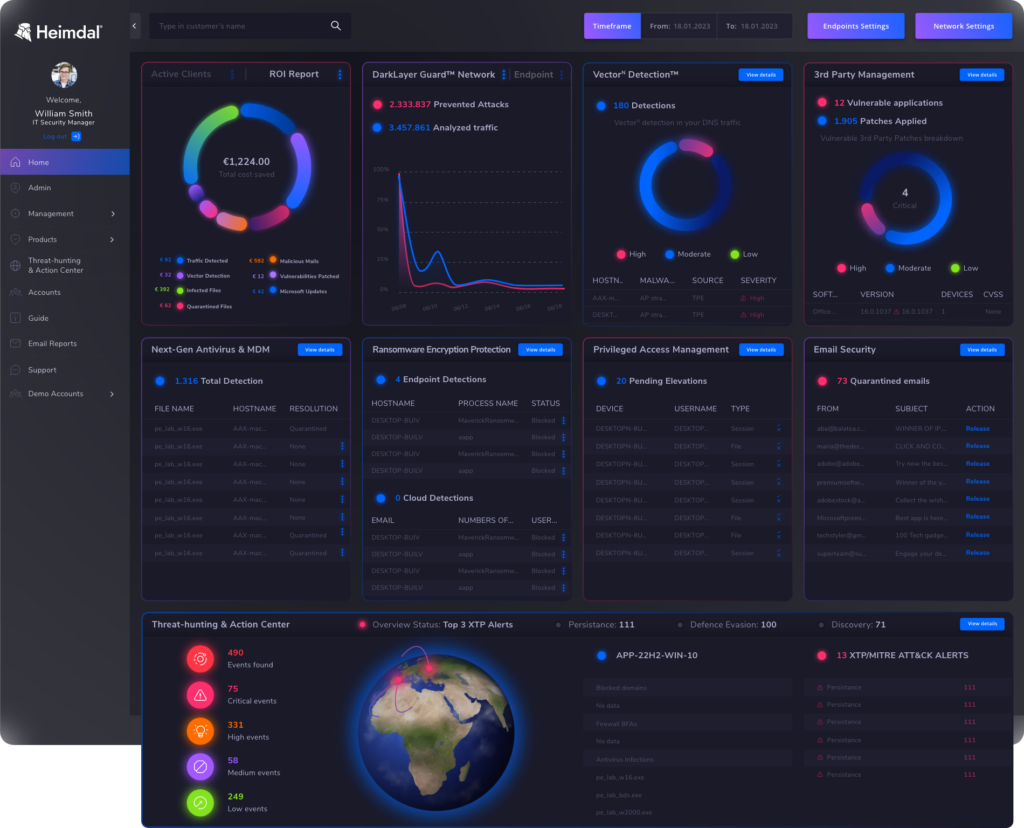Contents:
CrowdStrike challenges
However, despite its strengths, CrowdStrike Falcon is not without its challenges. Users report that the interface is complex and difficult to navigate, with multiple screens making it harder to access key features efficiently. A high level of cybersecurity expertise is often required to fully leverage the platform, making it less accessible to those without advanced IT knowledge.
Additionally, while its analytics capabilities are robust, the dashboards and reporting tools could be more user-friendly and visually appealing, which can make it harder for analysts to quickly extract meaningful insights.
Integration with other tools can sometimes be cumbersome, as the prerequisites for certain integrations are lengthy, and newer applications may not integrate as smoothly as expected. Another common concern is false positives, which, while indicating an aggressive security stance, can create unnecessary noise and increase operational workload.
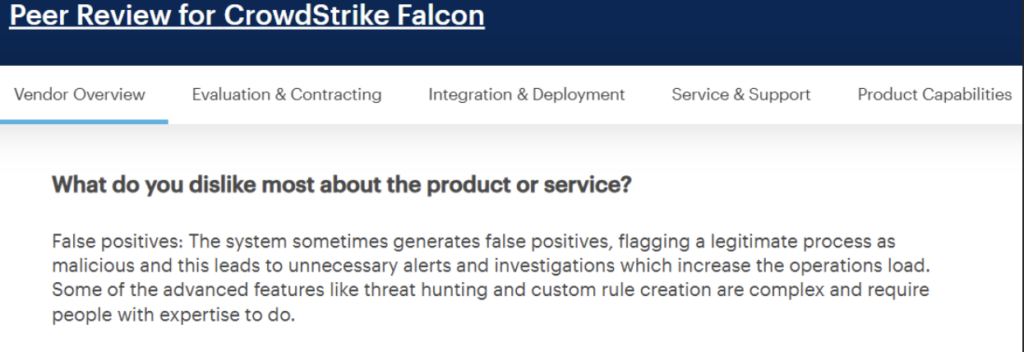
Linux users have also reported that Falcon’s support for the platform is not as seamless as it is for Windows and Mac, creating some limitations for organizations relying on Linux-based systems.

Beyond technical aspects, cost and support are frequent pain points. Falcon is one of the more expensive endpoint security solutions on the market, making it less accessible for businesses with tighter budgets. Additionally, customer support response times have been described as slower than expected, which can be frustrating when urgent assistance is needed.

SentinelOne Singularity verified reviews
Users say SentinelOne Singularity is a powerful and reliable endpoint security solution that provides advanced threat detection, automatic remediation, and continuous monitoring. Many appreciate its ability to track and mitigate emerging threats in real-time, ensuring complete coverage across all endpoints.
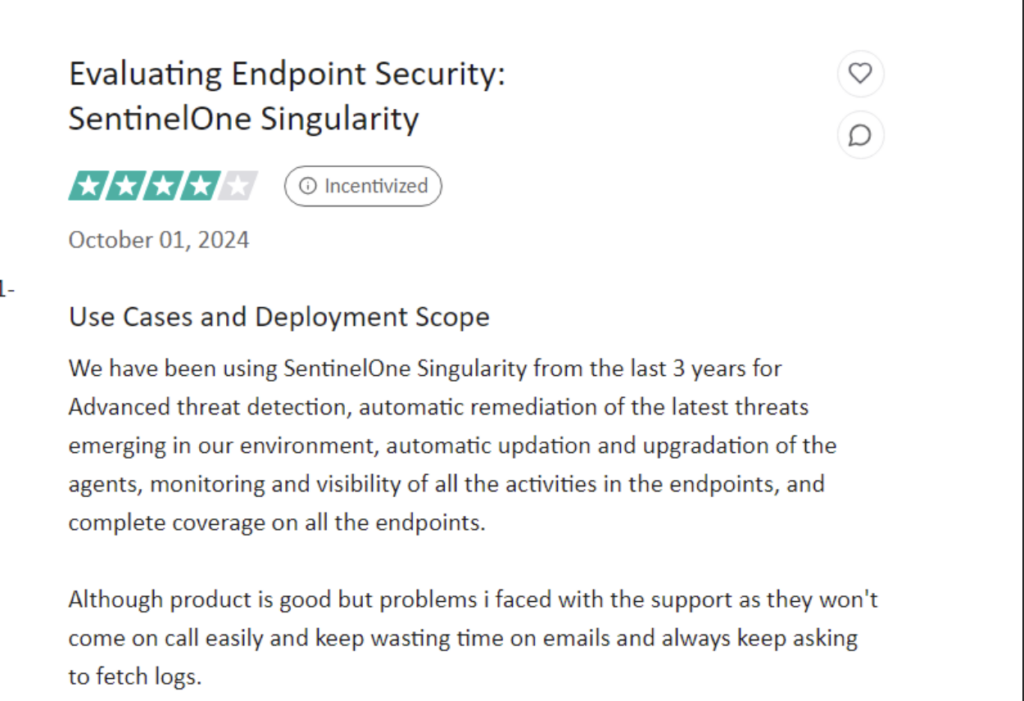
Its automatic updates and upgrades keep security measures up to date without requiring manual intervention, making it a low maintenance yet highly effective tool.
A standout feature frequently highlighted is its deep visibility and investigative capabilities. Users report that SentinelOne provides detailed insights into security incidents, allowing them to analyze events before, during, and after a detected threat. This level of transparency enhances root cause analysis, making it easier for security teams to understand and prevent future threats.

Some users emphasize SentinelOne’s ease of use and implementation, stating that it detects potential infections immediately, quarantines or neutralizes malware within seconds, and prevents unauthorized users from disabling it.

SentinelOne’s challenges
The platform’s automated incident response is seen as a major benefit, as it proactively stops threats before they can escalate. Additionally, its monthly updates help mitigate vulnerabilities and ensure continuous protection against evolving cyber threats.
However, customer support is a common concern, with users reporting delays in response times, particularly for urgent issues, and a reliance on emails rather than direct calls. Integration with other IT tools, such as Jira and ServiceDesk, can also be challenging, and organizations with on-premises infrastructures may find fewer options compared to its cloud-based solutions.

Another limitation is its AI-driven detection, which can sometimes be over-aggressive, misidentifying legitimate tools as threats. Initial deployment can be tricky, though users note that it becomes easier with experience.

Some also mention the lack of a built-in content filtering system, which could enhance its security offerings.
CrowdStrike vs SentinelOne Pricing
According to their website, CrowdStrike offers its Falcon platform in several tiers to cater to different organizational needs:
- Falcon Go: Designed for small businesses, this entry-level package is priced at $59.99 per device per year.
- Falcon Pro: Aimed at medium-sized organizations, it includes additional features and is available for $99.99 per device per year.
- Falcon Enterprise: Tailored for larger organizations with more complex security requirements, this package is priced at $184.99 per device per year.
- Falcon Complete: This is a fully managed endpoint protection service. Pricing details are available upon request.
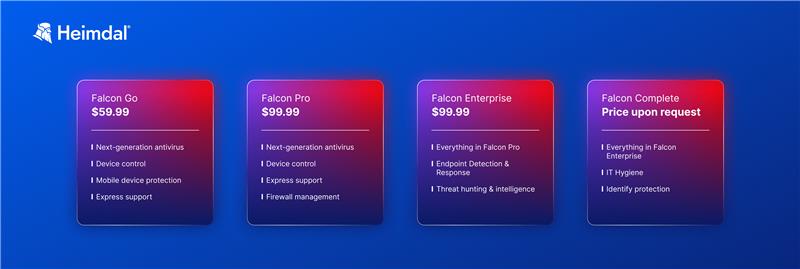
You can also visit Vendr Software Marketplace to explore pricing options tailored to your needs.
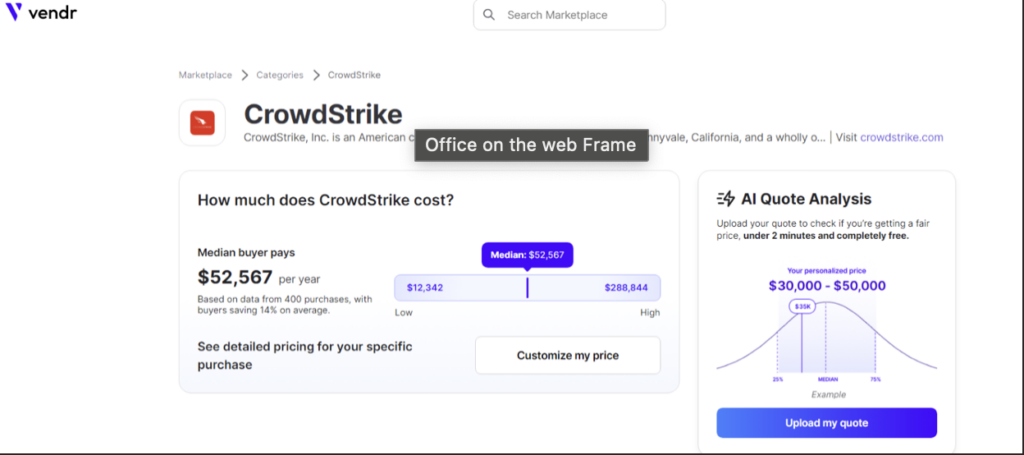
As for SentinelOne Singularity pricing varies by tier:
- Core – $69.99 per endpoint/year (basic protection with NGAV).
- Control – $79.99 per endpoint/year (adds firewall & XDR).
- Complete – $159.99 per endpoint/year (includes advanced EPP & EDR).
- Commercial – $209.99 per endpoint/year (adds managed threat hunting& extended data retention).
- Enterprise – Custom pricing (includes ITDR & forensic data collection).
Prices may vary based on the number of endpoints and organizational needs. For exact pricing, check with SentinelOne or an authorized reseller.
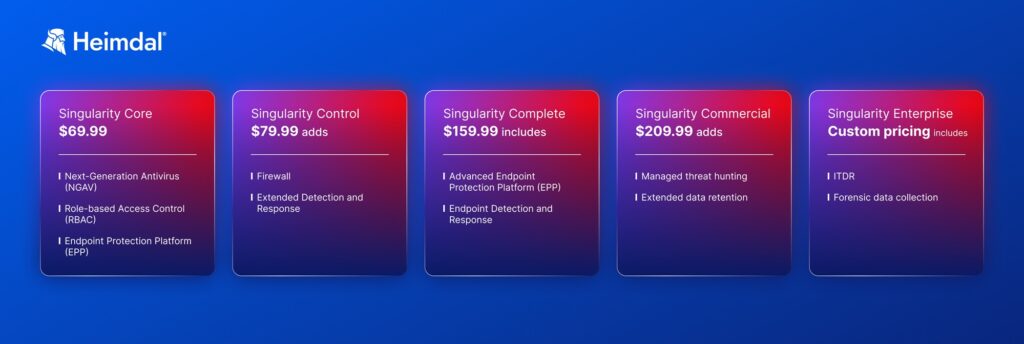
You can also visit Vendr Software Marketplace to explore pricing options tailored to your needs.
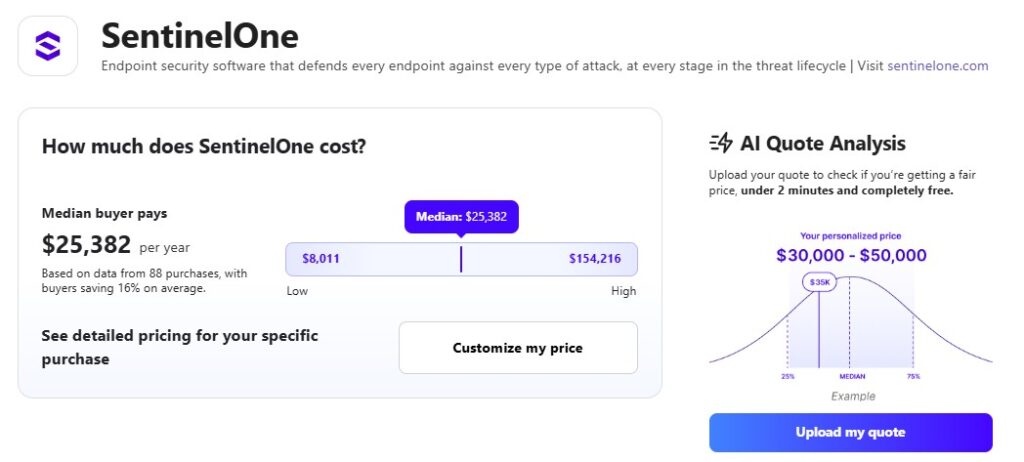
SentinelOne starts at $69.99 per endpoint/year, while CrowdStrike begins at $99.99, with higher tiers reaching $184.99+, making SentinelOne the more budget-friendly choice for cost-conscious organizations. But what if there was a third option—one that’s both more affordable and just as effective?
CrowdStrike Falcon vs SentinelOne Singularity: Features
CrowdStrike Falcon focuses on intelligence-driven endpoint security, emphasizing security workflow automation, asset management, and orchestration to streamline threat detection and response. Proactive alerts, malware detection, and intelligence reports help security teams anticipate and mitigate risks before they escalate.
Falcon’s sandboxing, dynamic/code analysis, and security validation allow for in-depth threat assessment, giving organizations the ability to analyze and test potential threats in a controlled environment. Its automated remediation, endpoint intelligence, and behavioral analysis provide real-time security insights, while system isolation ensures threats are contained before they spread.
Limitations of CrowdStrike
Analysts and user reviews consistently rate CrowdStrike’s products as some of the most expensive on the market, which can be a challenge for smaller businesses with tight budgets. Also, CrowdStrike’s scale makes effective support a challenge. Generally, users rely on the support group and troubleshooting issues themselves, which they only realize after signing the contract.
CrowdStrike’s products are designed to address specific challenges. But this just forces customers to string together multiple overlapping apps, integrations, and add-ons to get the full coverage. More tools mean more costs, hassle, and confusion.
Furthermore, while Falcon excels in endpoint protection, it offers limited functionality in other key areas like vulnerability management, DNS protection, and privileged access management (PAM). Organizations often need to supplement Falcon with third-party tools to achieve comprehensive security coverage or replace it with a more expansive, all-in-one cybersecurity tool like Heimdal®.
SentinelOne Singularity is designed for autonomous endpoint protection, combining AI-driven threat detection, automated remediation, and advanced analytics. It offers full system visibility, tracking all activities across endpoints to identify potential risks in real-time.
Its firewall, device control, and system isolation help contain threats, while behavioral analysis and malware detection not only stop attacks before they spread but also identify patterns in emerging threats, allowing security teams to proactively strengthen defenses against future attacks.
SentinelOne excels in detection and response, featuring rule-based detection, real-time monitoring, automated response mechanisms, and proactive threat hunting, ensuring faster threat containment, minimizing breach risks.
The platform leverages AI & machine learning, threat intelligence, and extensive data collection to provide deep behavioral insights into security events, enabling early threat detection and smarter decision-making to stop attacks before they cause damage, reducing downtime and security risks. Incident reports are automatically generated, streamlining response efforts for security teams.
Limitations of SentinelOne Singularity
SentinelOne’s Singularity Marketplace expands functionality with third-party apps and integrations, but this adds costs, complexity, and potential security gaps. Businesses may face higher licensing fees, integration challenges, and inconsistent updates, weakening threat response.
Key features like next-gen antivirus, ransomware encryption protection, and privileged application control aren’t included in the base package, forcing companies to invest in additional tools. Without ransomware encryption protection, businesses risk data loss and costly downtime, while the lack of privileged application control increases exposure to unauthorized access and privilege escalation attacks.
Singularity Marketplace’s reliance on third-party tools and missing essentials can drive up costs and introduce security vulnerabilities.
To help you better understand how these two leading cybersecurity solutions compare in real-world scenarios, we’ve included a detailed video analysis of CrowdStrike vs. SentinelOne.
This video breaks down their core features, performance, threat detection capabilities, and overall value for businesses.
Whether you’re evaluating endpoint protection options or looking to switch providers, this side-by-side comparison offers valuable insights to support your decision-making process.
Heimdal®: The Best CrowdStrike and SentinelOne Alternative
We’re Heimdal, an alternative to both CrowdStrike and SentinelOne. This comparison is built on real reviews, pricing, and publicly available data, so you don’t have to spend hours piecing it all together.
Heimdal® is as effective as CrowdStrike and Sentinel One but cheaper. The solution offers a comprehensive, all-in-one platform designed to protect organizations against both known and emerging threats.
If we seem like the right fit, we’d love to hear from you.
What sets Heimdal® apart is its multi-layered security approach. Heimdal’s XDR combines threat prevention, patch and asset management, network security, antivirus, privileged access management, unified endpoint management, etc. By integrating these essential defenses, Heimdal helps organizations keep critical data and intellectual property safe.
With automation, unification, intelligence, and a proactive defense strategy, Heimdal® simplifies cybersecurity, allowing teams to focus on what truly matters—running their business with confidence.
Heimdal® vs CrowdStrike
There are several reasons that make Heimdal a top CrowdStrike alternative.
Heimdal delivers true all-in-one security with the most complete XDR suite in the industry, combining 15 security solutions in a single platform. With CrowdStrike, businesses often find themselves juggling multiple add-ons and third-party integrations, leading to higher costs, compatibility issues, and operational inefficiencies. Heimdal eliminates this hassle—fewer tools mean lower costs, simpler management, and stronger security across all endpoints.
Support is another key differentiator. Many CrowdStrike users reported slow response times and self-service troubleshooting, which can delay critical security responses. Heimdal customers experience true, real-time support—as one customer recently shared. Submitting a ticket meant they had to be ready to troubleshoot immediately due to our team’s fast response. Unlike competitors who promise quick support but fail to deliver, Heimdal ensures immediate expert assistance. When an incident happens, a fast response makes the difference between containment and catastrophe.
Heimdal® vs SentinelOne
Heimdal delivers a broader security surface, combining proactive prevention and reactive detection in a single platform. SentinelOne focuses on traditional detection and response. On the other hand, Heimdal offers in one suite:
- DNS Security
- Patching (MS & 3rd Party)
- Next-Gen AV
- Ransomware Encryption Protection
- Privilege & Application Control
This end-to-end approach offers a wider threatscape view and prevents cybersecurity silos that are notorious for disrupting defense. While SentinelOne’s forensic capabilities are strong, its reactive nature leaves businesses exposed to threats before action is taken. With Heimdal, prevention comes first—fewer gaps, stronger security, and simplified management. That’s what makes it one of the best alternatives to SentinelOne.
Heimdal® Major Benefits
Unified Security
Managing multiple security tools is complex, costly, and often leaves gaps attackers can exploit. Heimdal eliminates this challenge with the industry’s most complete XDR suite, delivering 15 cutting-edge solutions in a single, award-winning platform. With seamless integration, you get fewer tools, less confusion, and stronger security, while reducing overhead and operational strain. One platform means complete visibility, faster response times, and no blind spots.

Proactive Threat Hunting
Most security solutions detect threats only after they’ve already breached your system. Heimdal’s XDR tools analyze signals at the traffic layer, proactively identifying and blocking threats before they even reach your network. Unlike CrowdStrike, which relies on memory and file-based detection after penetration, Heimdal stops attacks at the earliest stage. Thus, it minimizes risk and damage.
Smart Cost Optimization: More Security, Less Complexity
Cybersecurity shouldn’t be a budget drain. Heimdal combines multiple essential security layers into one, cutting costs while enhancing protection. By consolidating tools, you reduce licensing fees, integration hassles, and operational inefficiencies, all while strengthening your defense.

First Class Support
Every Heimdal customer has a dedicated Customer Success Manager, ensuring expert support with a response time of under 15 minutes. No chatbots, no delays, just real experts when you need them most.
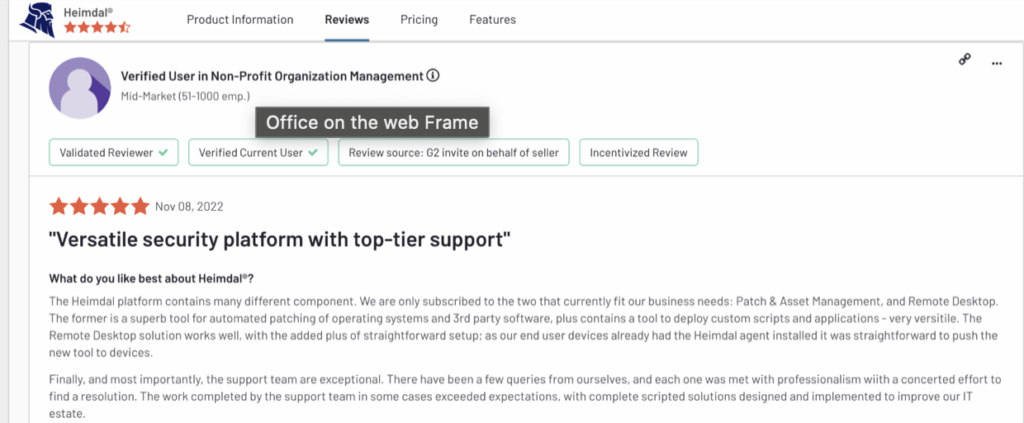
Heimdal’s security services comprehensively cover the entire IT landscape. Our Managed Extended Detection and Response (MXDR) suite is designed to prevent multiple security threats, including ransomware and business email compromises. Our MXDR team provides 24/7 monitoring, threat hunting, and rapid incident response. This makes your organization resilient against evolving cyber threats.
Ditch the complexity, get complete protection in one unified platform. Heimdal’s XDR suite stops threats early, cuts costs, and delivers expert support when you need it.
Ready to level up your security? Book a demo today and explore our solutions—plus, you can easily enquire about pricing on our website.


 Network Security
Network Security
 Vulnerability Management
Vulnerability Management
 Privileged Access Management
Privileged Access Management
 Endpoint Security
Endpoint Security
 Threat Hunting
Threat Hunting
 Unified Endpoint Management
Unified Endpoint Management
 Email & Collaboration Security
Email & Collaboration Security




